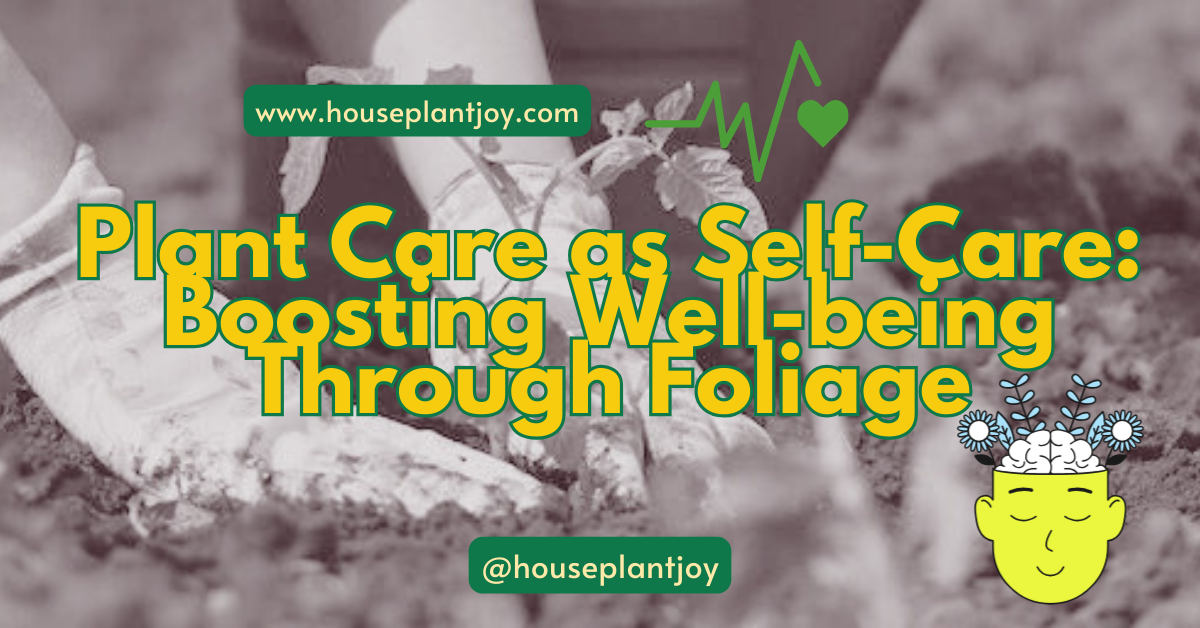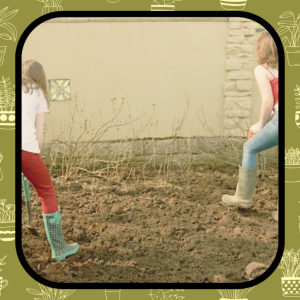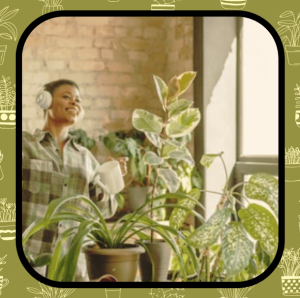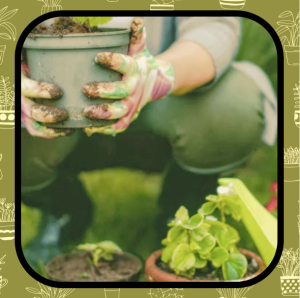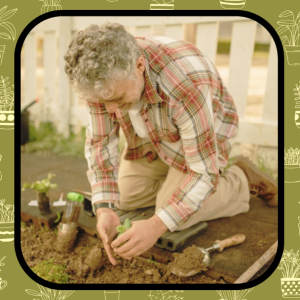HousePlantJoy is supported by our audience. When you purchase through one of our links, we may earn a small affiliate commission. As an Amazon Associate I earn from qualifying purchases. Your cost is not affected.
==================
Engaging in the nurturing art of plant care is more than just a green thumb’s delight; it’s a pathway to enhancing your overall well-being. This guide explores the profound connection between plant care and self-care, shedding light on how tending to your leafy companions can be a transformative journey for your mental health.Just as plants thrive with the right balance of water, light, and nutrients, integrating plant care into your routine becomes a mindful ritual, reflecting the care you need to be your best self. So, let’s delve into the enriching world of plant care as a means to cultivate a flourishing sanctuary for both your leafy companions and your personal growth.
Plant Care as Self-Care: A Guide to Boosting Well-being Through Foliage
Engaging in plant care is an enriching practice that reflects the importance of mindfulness and self-nurturance in our daily lives. Just as a plant requires the right balance of water, light, and nutrients to thrive, individuals benefit from routine attention and self-care practices that support mental health and overall well-being. As you integrate plant care into your life, you establish a routine that can become a calming and grounding ritual, mirroring the care you also need to be your best self.
Maintaining houseplants goes beyond mere aesthetics. It is an act of nurturing something outside oneself that, in turn, contributes to a nurturing environment. Similar to the way the elegant Peace Lily signifies resilience and growth under the right conditions, your daily interactions with your plants can serve as a metaphor for personal growth. By optimizing your environment with houseplants, you can create a sanctuary that bolsters both their growth and your own personal development.
Key Takeaways
- Plant care serves as a practice in mindfulness and a reflection of one’s commitment to self-care.
- Nurturing your houseplants fosters an environment conducive to personal growth and mental well-being.
- A consistent plant care routine can be a serene anchor in your daily life, enhancing your ability to care for both your plants and yourself.
The Connection Between Plant Care and Self-Care
Taking care of plants can mirror the practices we use for our own wellbeing. Engaging with your houseplants requires attentiveness and a nurturing attitude—qualities that are also beneficial for personal self-care routines.
- Routine: A set schedule for watering and maintaining your plants instills a sense of routine. Similar to how a daily self-care ritual can provide structure, plant care creates time-bound tasks that can anchor your day.
- Mindfulness: When you are pruning or repotting, you focus on the present moment. This act of mindfulness can reduce stress and promote a peaceful state of mind.
- Growth: As your plants grow and thrive, you witness the tangible results of your nurturing. This growth can increase feelings of accomplishment and boost your mood.
- Adaptation: Adjusting plant care based on season or growth phase teaches flexibility. This can remind you that personal care also needs adaptability as your needs change over time.
| Plant Care Action | Self-Care Analogy |
|---|---|
| Watering | Hydrating your body |
| Feeding | Nourishing yourself with a good diet |
| Pruning | Removing negative influences from your life |
Finally, as plants respond to consistent care with healthy growth and vibrancy, you may find that regular attention to your own self-care needs leads to a flourishing sense of personal wellbeing.
Fundamentals of Plant Care
Taking care of plants can be immensely rewarding and a great way to practice self-care. Providing the proper environment and meeting the basic needs of your plants is key to their health and your success as a caregiver.
Understanding Plant Needs
To thrive, plants require the right balance of light, water, and nutrients. Each species may have different needs, so it’s crucial to research and understand:
- Light: Determine how much natural light your plants need, be it direct or indirect sunlight. Place them accordingly to avoid leaf burn or etiolation.
- Water: Over-watering can be just as harmful as under-watering. Learn the watering frequency that matches your plant’s preference for a moist or dry environment.
- Nutrition: Feed your plants with the appropriate type and quantity of fertilizer, but be careful not to over-fertilize, which can lead to nutrient burn.
Choosing the Right Plants
Selecting the right plants for your space and lifestyle ensures that your plant care routine is both satisfying and sustainable.
- Consider the light conditions of your home.
- Choose plants known for their resilience and low maintenance if you’re a beginner or often busy.
- Match your plants to your capacity for care; some might need more attention than others.
Essential Tools for Plant Care
To provide the best care for your houseplants, equip yourself with a few essential tools that will make the process easier and more effective.
- Watering can: Get one with a long spout to reach the soil directly and avoid wetting the leaves unnecessarily.
- Pruning shears: Keep these sharp for clean cuts when pruning dead or overgrown parts.
- Gloves: Protect your hands when handling soil or prickly plants.
- Moisture meter: This helps avoid guesswork by measuring the moisture level of the soil.
By following these fundamentals and using the right tools, you can create a thriving environment for your plants that will also enhance your own well-being.
Creating a Self-Care Routine with Plants
Engaging in a self-care routine with plants not only fosters the growth of your green companions but also cultivates your own well-being. Here’s how you can intertwine plant care with self-care practices to nurture both your plants and personal peace.
Mindfulness in Watering and Feeding
As you water and feed your plants, pay close attention to the soil’s moisture level and your plants’ feeding schedules. Creating a ritual of checking the soil before watering ensures that you provide just the right amount of moisture—neither too little nor too much. This act of mindful observation promotes a sense of presence and attentiveness that can be grounding and calming.
The Therapeutic Value of Pruning
Pruning is not just about maintaining plant health, it can also be an exercise in letting go of the unnecessary. As you trim away dead or overgrown parts of your plants, consider this a moment to reflect on aspects of your life that might need trimming for healthier growth. This intentional practice can help declutter both your plants and your mind.
Incorporating Plants into Meditation
Including plants in your meditation space can enhance the calming experience. Place a plant within your view and focus on its details—the texture of its leaves, the color variations, and the steady rhythm of its existence. This form of meditation can foster a deeper connection to nature and help establish a tranquil environment for your practice.
Optimizing Your Environment for Plants and Wellbeing
Creating an environment that benefits both your plants and your personal well-being involves careful consideration of lighting, temperature, and the overall arrangement of your space. Aligning these elements can lead to a harmonious and nurturing setting for plant growth and self-care.
Lighting and Room Ambiance
Proper lighting is crucial for plant health and can influence your mood. Place your plants near windows where they can receive ample natural light, with bright, indirect light being ideal for most houseplants. If natural light is limited, supplement with grow lights. These mimic natural sunlight and can be especially helpful during the shorter days of winter. The soft glow of these lights can also create a serene atmosphere in your home.
Temperature and Humidity Control
Most houseplants thrive in a consistent temperature range, typically between 65-75°F (18-24°C). Avoid placing plants near drafts, heat sources, or air conditioning vents that could cause sudden temperature changes. Maintain humidity levels between 40-60% to mimic the natural environment of many houseplants. Consider a small humidifier or a pebble tray with water to increase humidity in dry rooms.
Creating a Calming Green Space
Your living space should be a retreat that brings peace and tranquility. Introduce a variety of plants with different textures and colors to create a visually engaging green space. Organize your plants in clusters to enhance their visual impact while also making watering and maintenance more efficient. Personalize with comfortable seating and soft textiles to encourage relaxation and reflection in your green oasis.
Challenges and Solutions in Plant Care
Plant care is a rewarding activity, but it also comes with its own set of challenges. Properly addressing these obstacles can lead to healthier plants and a more enjoyable experience for you.
Dealing with Pests and Diseases
Pests and diseases can wreak havoc on houseplants, leading to stunted growth or even death. If you notice signs of infestation, such as discolored leaves or slow growth, take immediate action. A solution is to use neem oil, a natural pesticide that’s effective against a broad range of pests. For diseases, removing affected parts and improving air circulation around your plants can help. Remember to isolate new plants for a few weeks to prevent the spread of pests to your indoor garden.
Overcoming Common Plant Care Mistakes
Many common plant care mistakes stem from watering issues—either too much or too little. Overwatering can lead to root rot, while underwatering can cause plants to wilt and die. Use your finger to test soil moisture; if it’s dry an inch below the surface, it’s time to water. Another mistake is improper lighting; if your plant’s leaves are yellowing, it might need more sunlight. Lastly, ensure that you’re not feeding your plants with too much fertilizer which can lead to nutrient burn. Less is often more when it comes to plant nutrition.
Handling Plant-Related Stress
Stress in plants can be triggered by environmental changes such as sudden temperature fluctuations or repotting. To minimize stress, always acclimate your plants slowly to new conditions and be cautious when introducing them to different areas of your home. If a plant becomes stressed during repotting, give it time to recover without making further changes to its environment, and ensure you’re using the right soil mix for your plant’s specific needs.
Advanced Techniques in Plant Care
To elevate your plant care routine, it’s essential to understand and implement advanced techniques that can foster stronger growth and vitality in your plants.
Propagating Your Plants
Propagating your plants allows you to create new plants from the ones you already own. Stem cuttings are a common method, where you cut a segment of the stem with at least one leaf node and submerge it in water until roots develop. For succulents, leaf cuttings can be laid on soil until they sprout roots. It’s vital to use a clean, sharp blade to prevent infection and ensure a quick recovery for the parent plant.
Hydroponics and Advanced Growing Systems
Hydroponics is a soilless growing technique that supplies plant roots with nutrient-rich water, resulting in faster growth compared to traditional soil methods. Setups can range from simple DIY containers to advanced systems with timers and pumps. Key considerations include:
- Nutrient solutions: Tailor them to your plant’s specific needs.
- Lighting: Artificial light sources should deliver sufficient lumens and spectrum.
Seasonal Plant Care Adjustments
Your plant’s needs change with the seasons, and adjustments are critical for their health. In winter, reduce watering frequency but increase humidity with misting or humidifiers to counteract dry indoor air. During spring and summer, gradually increase watering and adopt a regular fertilizing schedule to support growth. Be aware of changing light conditions throughout the year and move your plants as necessary to ensure they receive optimal exposure.
Connecting with the Plant Care Community
Taking an interest in plant care extends beyond your personal space; it opens doors to a network of like-minded individuals. By reaching out and connecting with others who share your passion for plants, you gain access to valuable resources, advice, and camaraderie.
Local Gardening Clubs
Joining a local gardening club can significantly enhance your plant care journey. You’ll learn about area-specific planting techniques, seasonal advice pertinent to your region, and you may even get the opportunity to participate in local community gardens. To find a nearby club, check out local community boards, gardening stores, or libraries for meeting times and membership details.
Online Forums and Social Media
Online forums and social media are treasure troves of knowledge, where you can exchange tips with plant enthusiasts from around the world. Platforms such as Facebook groups, Reddit, and Instagram offer immediate feedback and support on your plant care queries. Use hashtags like #PlantCare and #Houseplants to find relevant conversations and connect with plant influencers who offer daily inspiration.
Plant Swap Events
Attending plant swap events not only allows you to diversify your collection but also fosters a sense of community as you share cuttings, seeds, or plants. These events can be found through local plant clubs, notices on community boards, or announcements on gardening blogs. It’s a fantastic way to meet fellow plant lovers in person and learn more about different plant species and care methods.
Reflecting on Personal Growth Through Plant Care
Caring for houseplants can mirror your own personal journey. As you nurture your plants, you may find that you’re nurturing yourself in the process. Here’s how tending to plants can facilitate self-reflection and growth:
- Mindfulness: Just as plants thrive with attentive care, your mental and emotional well-being benefits from regular self-reflection. Acknowledge the parallels between the slow, yet rewarding, process of a plant’s growth and your own personal development milestones.
- Patience: Growth takes time. Whether it’s waiting for a plant to bloom or working on personal goals, learn to appreciate the journey rather than rushing toward the end result.
- Resilience: Plants can teach resilience. They weather storms and adapt to new environments. When you face challenges, draw inspiration from your plants’ ability to bounce back.
| Aspect of Care | Personal Growth Reflection |
|---|---|
| Watering | Are you nurturing your needs effectively? |
| Pruning | What in your life needs to be let go of to promote new growth? |
| Light Exposure | Are you getting enough exposure to new ideas and experiences? |
By caring for plants, you can gain insight into your own care needs. Recognize the significance of the lessons plants teach about self-care, and integrate these into your daily life. As you witness your plants flourish, take a moment to acknowledge your own growth and resilience.
Cultivating Harmony: A Flourishing Finale
As we conclude our exploration into the symbiotic relationship between plant care and self-care, remember that the journey doesn’t end when the watering can is set aside or the pruning shears find their place. Embracing plant care as a form of self-nurturance offers a continuous loop of growth, resilience, and mindfulness.
By fostering a green haven within your living space, you’re not just cultivating vibrant flora but also nurturing your own mental well-being. As you witness your plants flourish, take a moment to acknowledge the parallel growth in your own life. Plant care, much like self-care, is a journey—a journey that leads to a flourishing sense of personal well-being.
So, continue this botanical voyage, let the therapeutic touch of nature guide you, and revel in the harmony between the flourishing foliage and your inner peace. May your plant care routine continue to be a source of serenity and growth in the beautiful garden of your life.
Frequently Asked Questions
Plants are more than just decorative pieces; they play a role in your mental health and emotional balance. Understanding their impact can help you cultivate a nurturing environment for both your plants and yourself.
How do indoor plants contribute to mental well-being?
Indoor plants can enhance your mental well-being by purifying the air, decreasing stress, and providing a sense of accomplishment. The act of nurturing something alive promotes mindfulness and can improve your mood.
Which houseplants are recommended for promoting self-care?
For self-care, easy-to-maintain houseplants like snake plants, monstera, or pothos are recommended. These plants offer a low barrier to entry for beginners and can provide a positive gardening experience.
In what ways does tending to houseplants aid in stress reduction?
Tending to houseplants can aid in stress reduction by creating a routine that requires gentle focus, taking your mind off stressors and fostering a relaxing atmosphere in your living space.
Can the presence of houseplants have a therapeutic effect on anxiety?
Yes, the presence of houseplants can have a therapeutic effect. Caring for plants can establish a sense of stability and control, alleviating feelings of anxiety by engaging you in a calming, nurturing activity.
What are the psychological benefits of engaging with plant care as a routine?
Engaging with plant care as a routine can boost your psychological health by building patience, heightening your self-awareness, and offering a tangible reward—the growth and blooming of your plants—which can enhance your sense of well-being.
How can the practice of caring for plants improve one’s mood and emotional health?
The practice of caring for plants can improve your mood and emotional health by connecting you with nature, causing the release of mood-improving endorphins as you physically interact with the soil and plants, and providing a sense of satisfaction as you observe the results of your care.
Cultivate Serenity with HousePlantJoy
Connect with us on social media for a mindful journey into mental wellness and houseplant care. Discover uplifting content, insightful product reviews, and a supportive community.
Facebook: HousePlantJoyBlog
Instagram: houseplantjoy20
Pinterest: houseplantjoy
Twitter: houseplantjoy
Join us in nurturing your mind and your plants! #HousePlantJoy #MentalWellness

